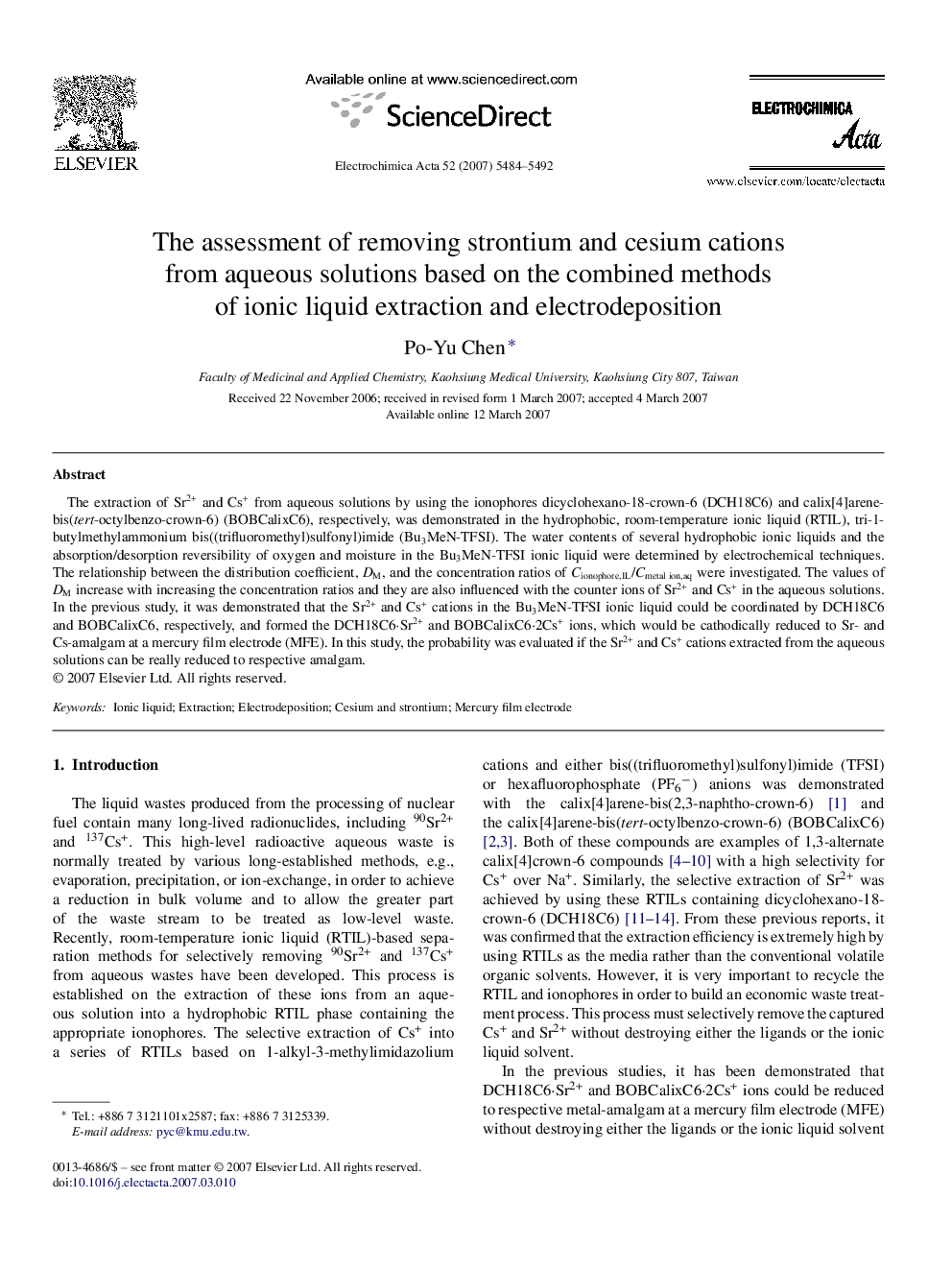| Article ID | Journal | Published Year | Pages | File Type |
|---|---|---|---|---|
| 193359 | Electrochimica Acta | 2007 | 9 Pages |
The extraction of Sr2+ and Cs+ from aqueous solutions by using the ionophores dicyclohexano-18-crown-6 (DCH18C6) and calix[4]arene-bis(tert-octylbenzo-crown-6) (BOBCalixC6), respectively, was demonstrated in the hydrophobic, room-temperature ionic liquid (RTIL), tri-1-butylmethylammonium bis((trifluoromethyl)sulfonyl)imide (Bu3MeN-TFSI). The water contents of several hydrophobic ionic liquids and the absorption/desorption reversibility of oxygen and moisture in the Bu3MeN-TFSI ionic liquid were determined by electrochemical techniques. The relationship between the distribution coefficient, DM, and the concentration ratios of Cionophore,IL/Cmetal ion,aq were investigated. The values of DM increase with increasing the concentration ratios and they are also influenced with the counter ions of Sr2+ and Cs+ in the aqueous solutions. In the previous study, it was demonstrated that the Sr2+ and Cs+ cations in the Bu3MeN-TFSI ionic liquid could be coordinated by DCH18C6 and BOBCalixC6, respectively, and formed the DCH18C6·Sr2+ and BOBCalixC6·2Cs+ ions, which would be cathodically reduced to Sr- and Cs-amalgam at a mercury film electrode (MFE). In this study, the probability was evaluated if the Sr2+ and Cs+ cations extracted from the aqueous solutions can be really reduced to respective amalgam.
